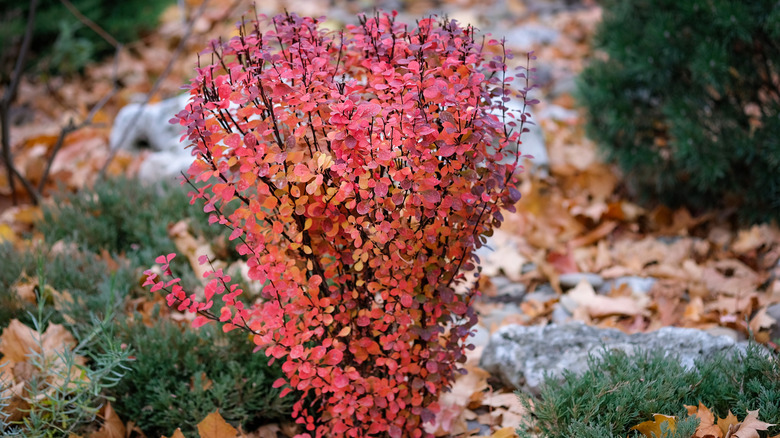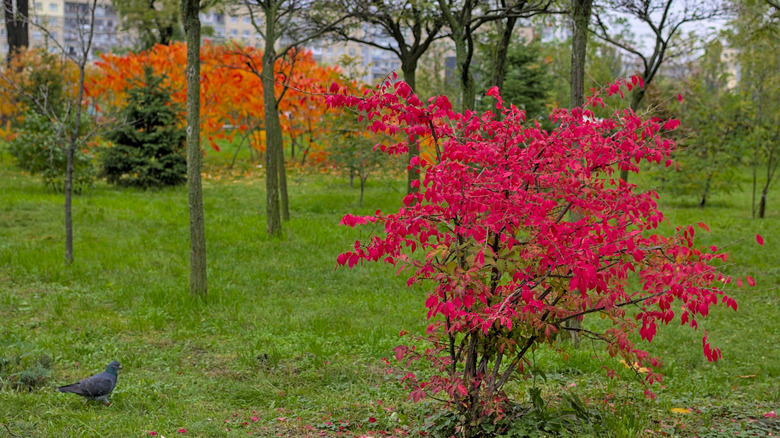Think Twice Before Planting This Beautiful Red Bush In Your Yard
It is easy to see why people would want to plant winged burning bush (Euonymus alatus) in their yards. It is a beautiful flowering shrub for your landscape, simple to grow, and is also low maintenance. But it is an invasive species that spreads easily and has overgrown some forest areas on the U.S. East Coast. Winged burning bush (sometimes just "burning bush") is not poisonous nor does it have thorns, but the danger it presents to native species is certain.
A native of Asia, it has been in the United States since the 1860s, but only recently have state natural resource departments come out with warnings against the species. One consequence of burning bush having been around for so long is that birds have spread its seeds and increased its range significantly, spreading it into local forests with no regard for regulation. Winged burning bush is illegal to sell in some states, in some states it is on a pathway to being prohibited to be sold, and others have no regulation whatsoever.
So far, 21 states have recognized it as an invasive species. But that doesn't stop people from selling it. According to the Purdue Extension Service, "Despite its demonstrated invasiveness, it remains one of the most popular landscaping shrubs sold by nurseries and retailers throughout many parts of the U.S."
How to remove winged burning bush and what to plant instead
What should you do if you find you have winged burning bush growing in your yard? It's such a glorious-looking plant that you may wonder if it's really that bad? As Leo Tolstoy said, "It is amazing how complete is the delusion that beauty is goodness." In this case, science answers the question, yes — it is dangerous for our environment.
Yet, winged burning bush is difficult to eradicate once it is established. Simply cutting it down with a chainsaw and then repeatedly doing the same when it grows back will likely kill it over a series of years. While it's labor intensive, if you have just a few of the plants around it is effective, manageable, and eliminates the need for applying herbicides — something many homeowners are resistant to employing. Where there are many plants to remove, cutting them down with a chainsaw and applying an herbicide is a practical solution. Choose a basal bark or water-based herbicide applied immediately after cutting the plant down. (Be certain you're obeying local regulations.)
As the saying goes, an ounce of prevention is worth a pound of cure. So, the best way to keep invasive garden plants like winged burning bush from our environment is not to plant them in the first place. If the idea of removing invasive shrubs is daunting to you, there are professional services available to do the work. Although there are many possible replacements for winged burning bush, here are three lovely suggestions that you might want to consider: black chokeberry (Aronia melanocarpa), American cranberry-bush (Viburnum trilobum), and red chokeberry (Ariona arbutifolia).

